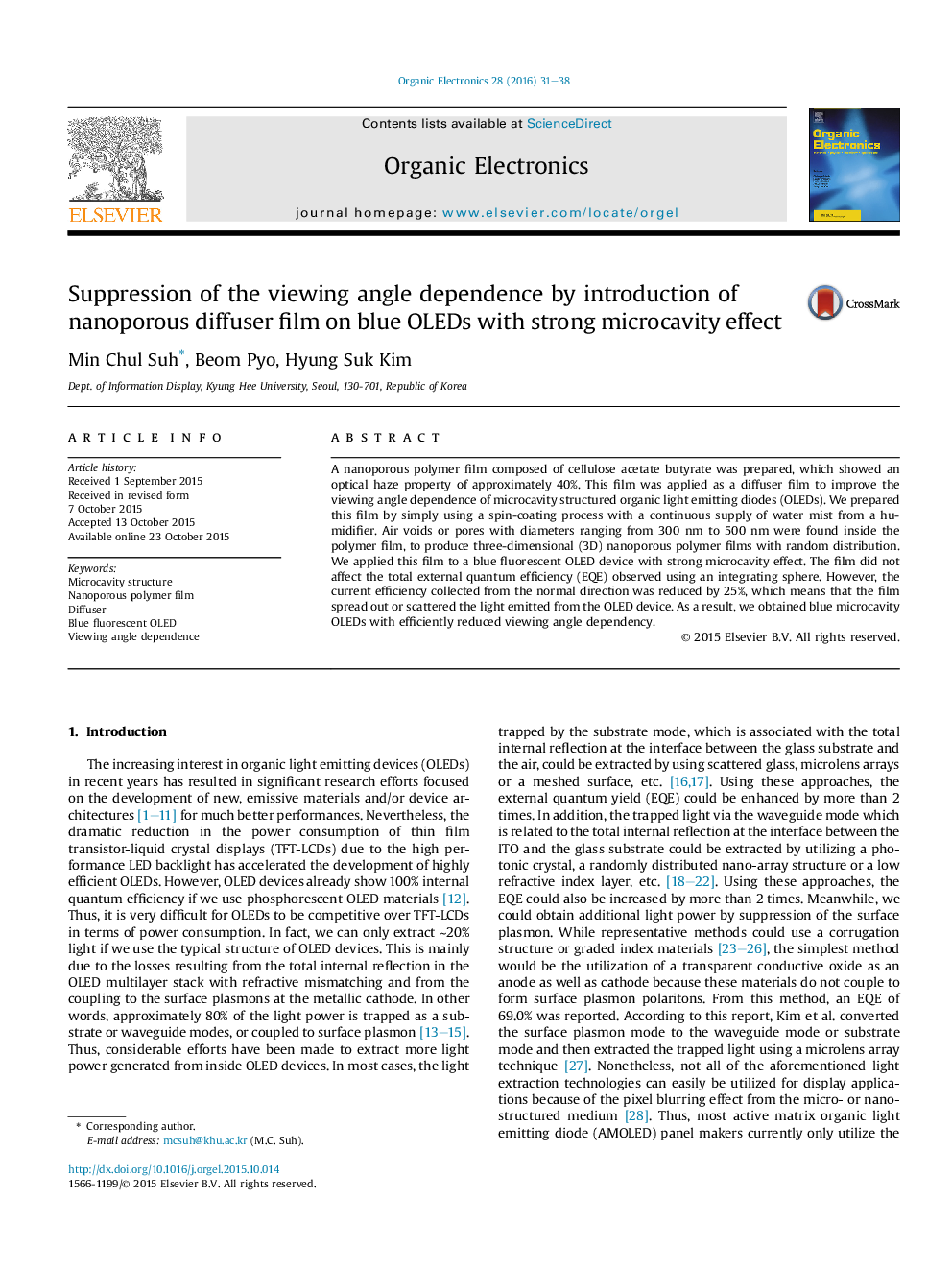| Article ID | Journal | Published Year | Pages | File Type |
|---|---|---|---|---|
| 1267110 | Organic Electronics | 2016 | 8 Pages |
•The fluorescent blue OLED with strong microcavity.•Narrow angular emission pattern from microcavity effect.•Nanoporous diffuser film fabricated by a simple spin-coating process.•Scattering of light emission to broaden the angle distribution.•Suppression of viewing angle dependence.
A nanoporous polymer film composed of cellulose acetate butyrate was prepared, which showed an optical haze property of approximately 40%. This film was applied as a diffuser film to improve the viewing angle dependence of microcavity structured organic light emitting diodes (OLEDs). We prepared this film by simply using a spin-coating process with a continuous supply of water mist from a humidifier. Air voids or pores with diameters ranging from 300 nm to 500 nm were found inside the polymer film, to produce three-dimensional (3D) nanoporous polymer films with random distribution. We applied this film to a blue fluorescent OLED device with strong microcavity effect. The film did not affect the total external quantum efficiency (EQE) observed using an integrating sphere. However, the current efficiency collected from the normal direction was reduced by 25%, which means that the film spread out or scattered the light emitted from the OLED device. As a result, we obtained blue microcavity OLEDs with efficiently reduced viewing angle dependency.
Graphical abstractFigure optionsDownload full-size imageDownload as PowerPoint slide
